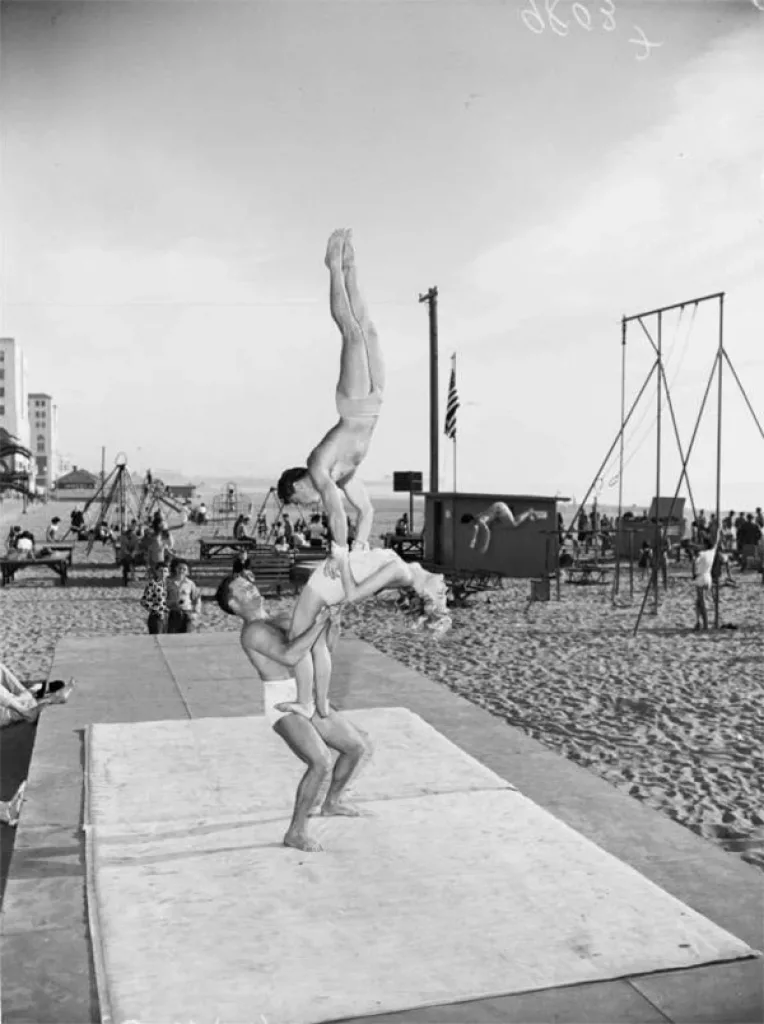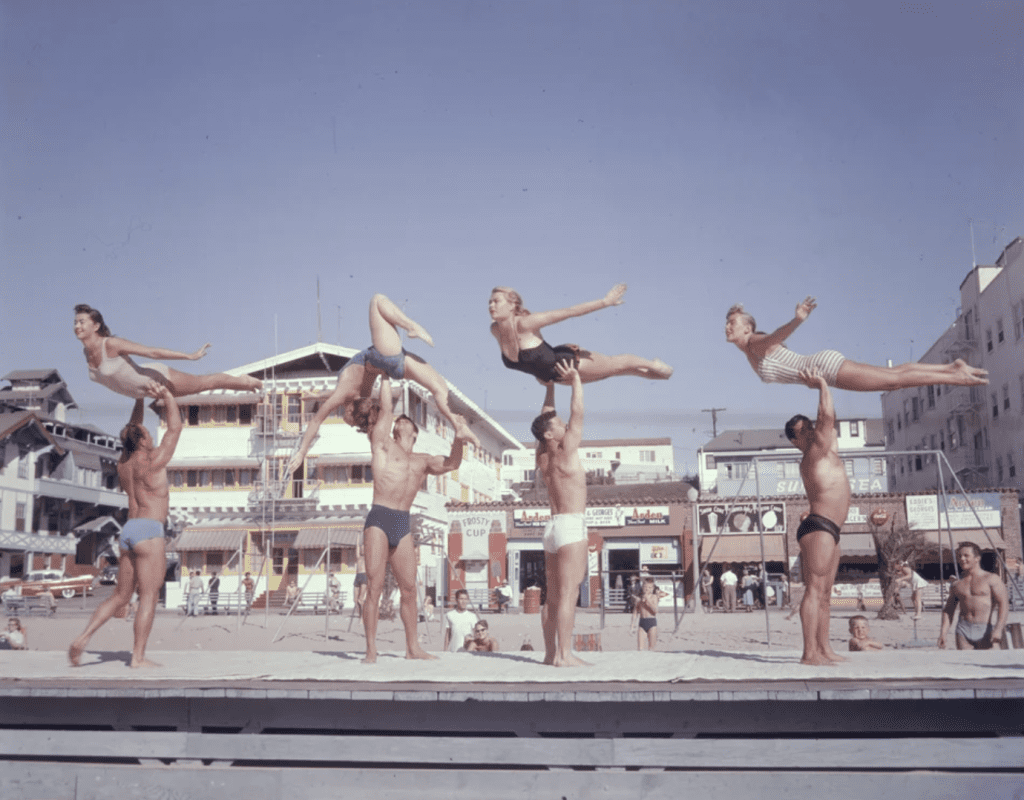
In a perfectly timed snapshot from the 1950s, we see four muscular men on a makeshift stage at the beach, each holding a woman midair with stunning precision. The women, dressed in classic one-piece swimsuits, stretch out like arrows in flight, frozen mid-movement in balletic poses. Behind them stands a sun-soaked backdrop of beachside shops, art deco buildings, and passersby who can’t help but stop and stare. It’s a scene that feels almost too perfect to be real—a living postcard from a golden era.
This isn’t just a photograph. It’s a portal into a time when Muscle Beach was more than a place—it was a movement, a living, breathing celebration of physicality, freedom, and self-expression. Long before Instagram influencers or modern fitness culture, there was Muscle Beach: raw, unscripted, and utterly electric.
Video: Original Muscle Beach (1955)
A Humble Beginning With a Powerful Legacy
Muscle Beach was born in 1934 in Santa Monica, California, as part of a public recreation initiative. At first, it was just an outdoor workout area with a few gymnastics rings and pull-up bars. But soon, it evolved into something much bigger—a spontaneous gathering place for bodybuilders, acrobats, gymnasts, and fitness lovers from all walks of life.
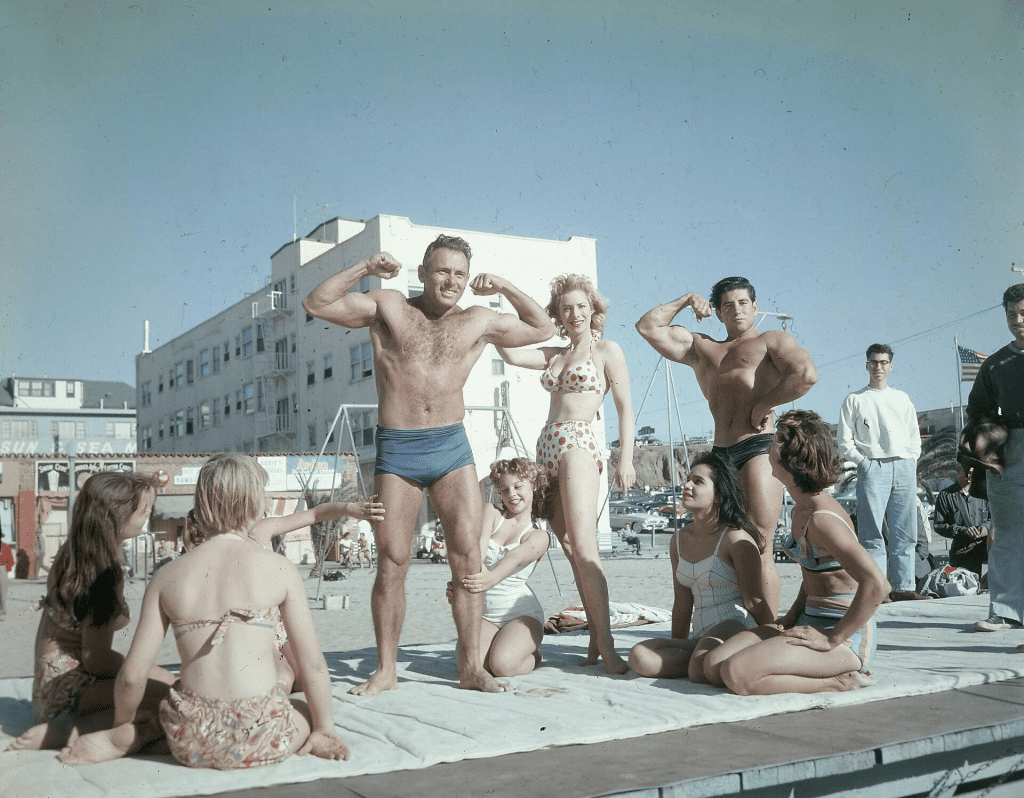
What made it special was the lack of formality. There were no membership fees, no dress codes, and no separation between performers and spectators. You could come to lift weights, swing from bars, practice handstands, or just watch in awe. The beach wasn’t just a gym—it was a stage, and everyone was invited to be part of the show.
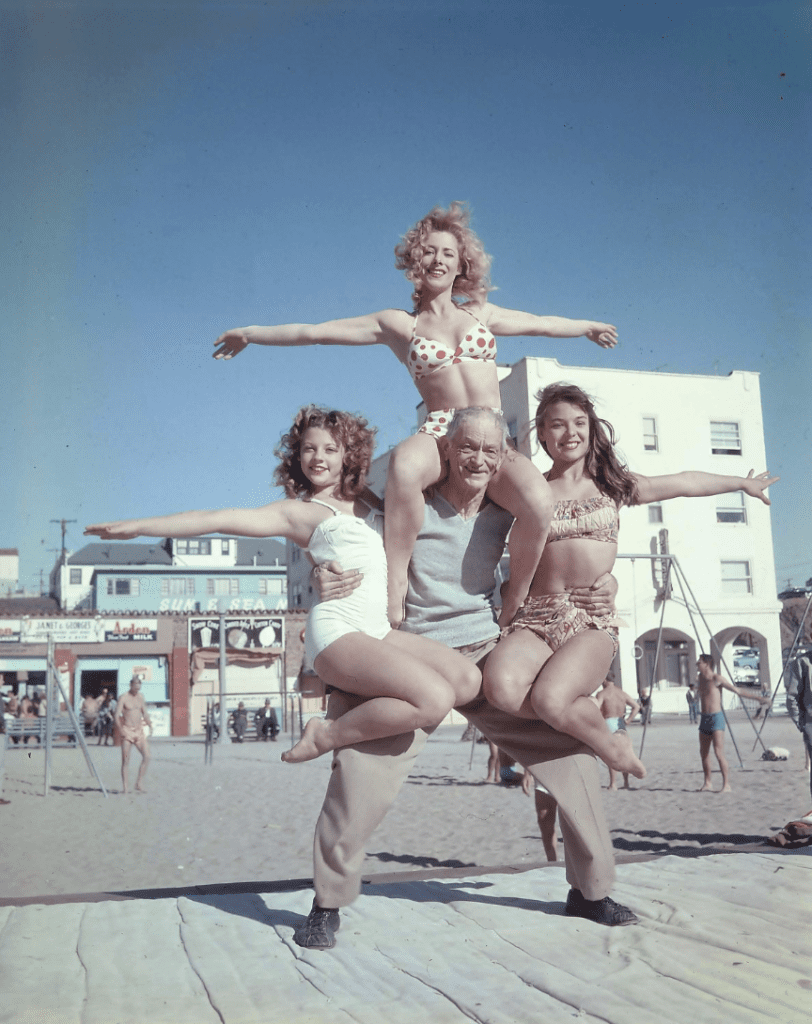
The Golden Era: 1940s to 1950s
By the time the 1940s rolled around, Muscle Beach had already gained national attention. And in the 1950s—the era in which our photograph was taken—it was at its peak. This was when Muscle Beach became a cultural landmark, appearing in magazines, newsreels, and films. It was common to find former circus performers, Olympic athletes, and Hollywood hopefuls training side-by-side in the open California sun.
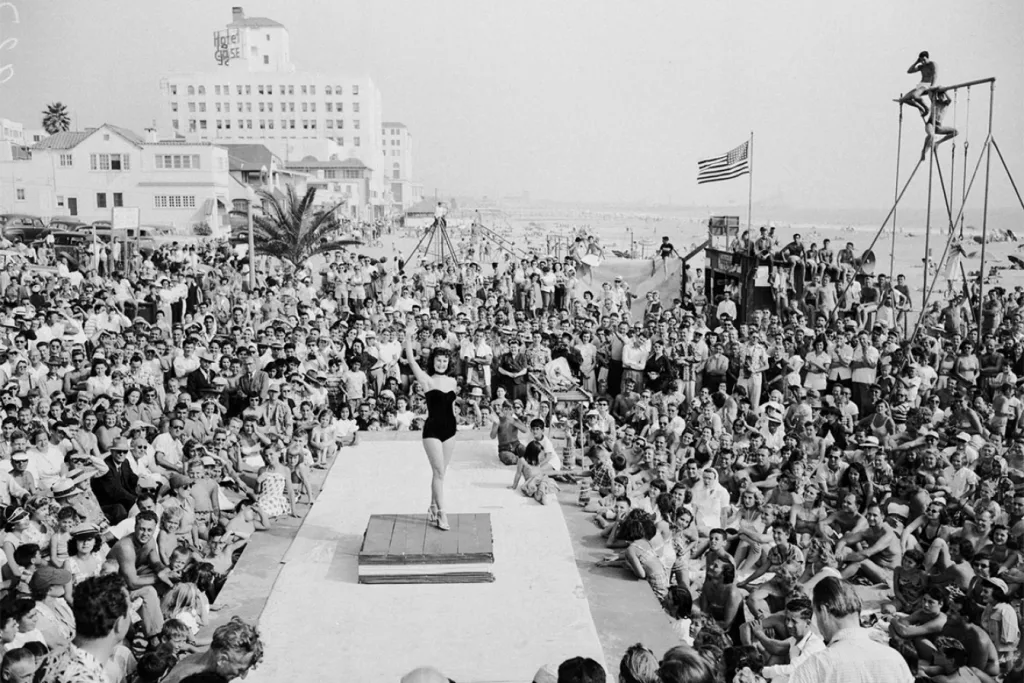
Crowds would gather every weekend to watch spontaneous shows of strength and skill. People didn’t just work out—they performed. Couples flipped and tumbled in unison, men lifted each other into human pyramids, and women demonstrated flexibility and grace that rivaled ballet dancers. It wasn’t just about muscle—it was about movement, rhythm, and artistry.
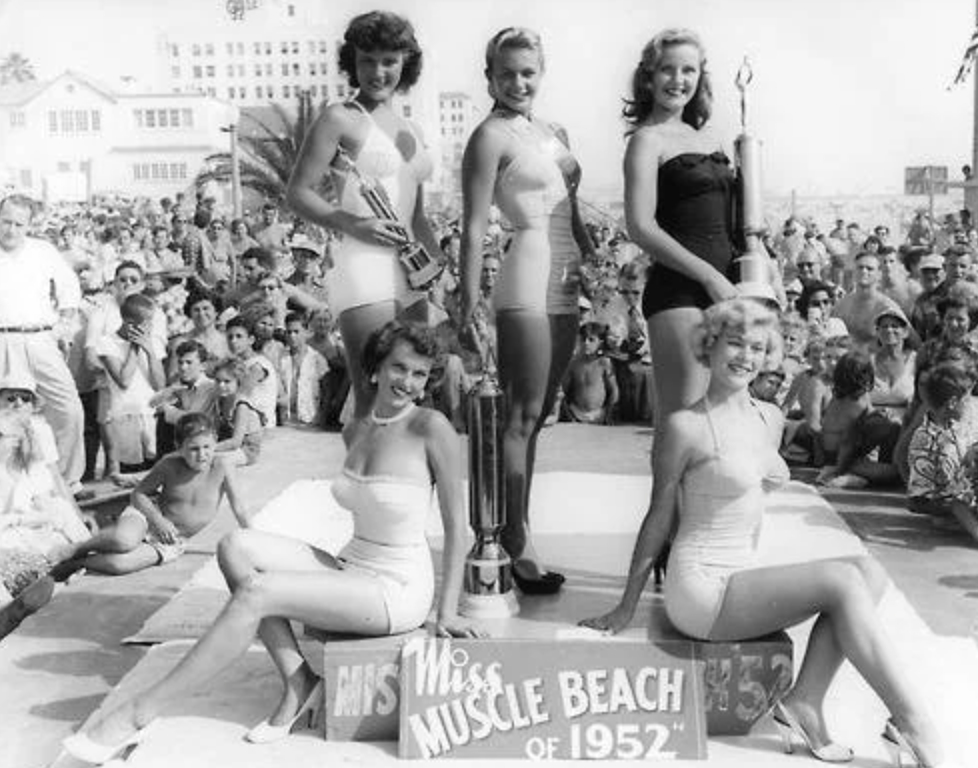
A Place That Broke Barriers
One of the most remarkable aspects of Muscle Beach was how inclusive and progressive it was for its time. Unlike the private gyms of the era, which often catered to specific clientele, Muscle Beach welcomed everyone—men, women, young and old, experienced athletes or curious passersby.
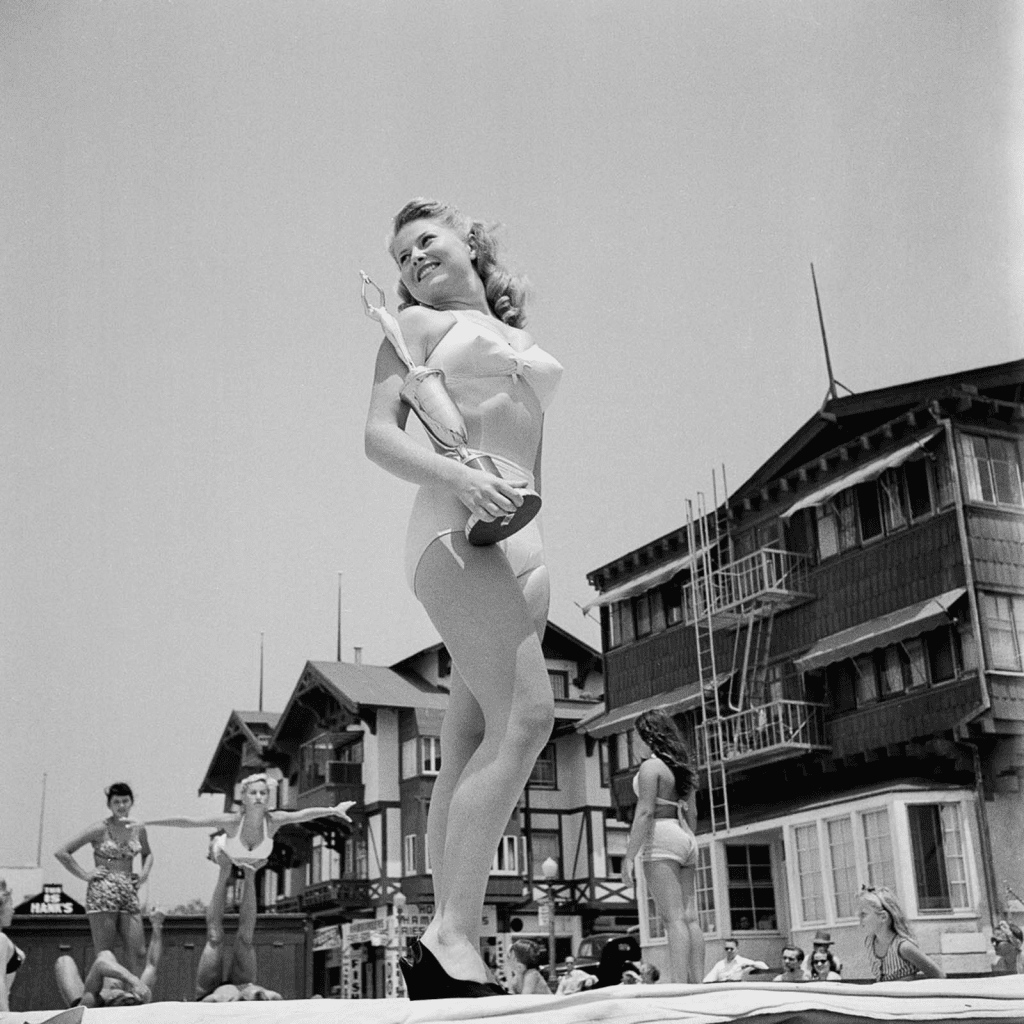
Women weren’t sidelined or treated as decoration. They were active participants, often taking center stage in strength routines and acrobatics. Some performed gravity-defying stunts. Others competed in early bikini contests that helped redefine beauty standards in America. Muscle Beach celebrated natural strength, diversity, and freedom of expression—long before those ideals became mainstream.
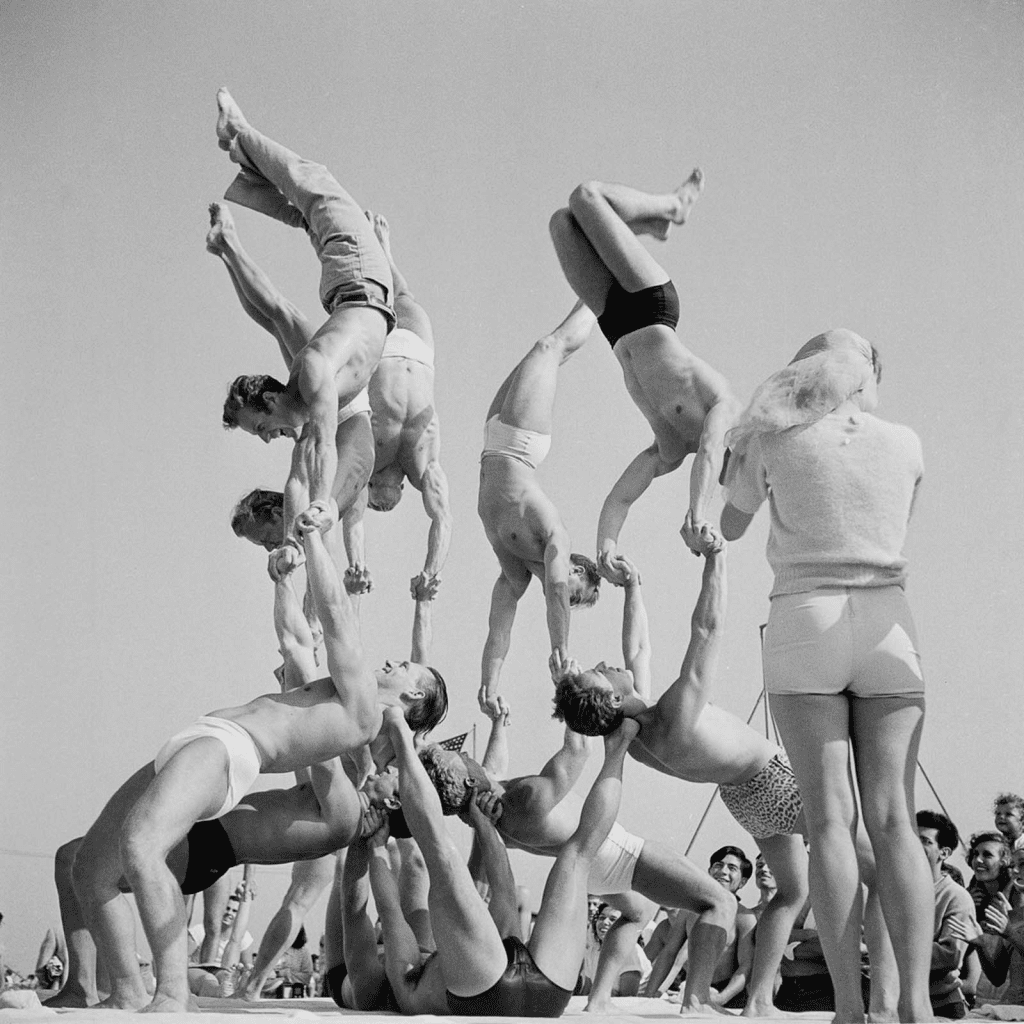
Muscle Beach and Hollywood: A Perfect Match
As the entertainment industry boomed, it wasn’t long before Muscle Beach became a talent pipeline to Hollywood. Stars like Steve Reeves (the original Hercules) and fitness pioneer Jack LaLanne got their start on this sandy stage. Producers, photographers, and casting agents frequently scouted the beach for new faces—and physiques—for upcoming roles or advertisements.

Muscle Beach became a symbol of California’s laid-back yet aspirational lifestyle: sunshine, strength, and showmanship rolled into one.
Video: Original Muscle Beach 1950s Santa Monica Vintage Photography
The Decline and the Rebirth in Venice
Despite its popularity, Muscle Beach Santa Monica was shut down in the late 1950s due to political and civic disputes. But its spirit didn’t die. Instead, it moved a few miles south to Venice Beach, where a new version of Muscle Beach rose—this time more structured, with weightlifting equipment, designated areas, and organized competitions.
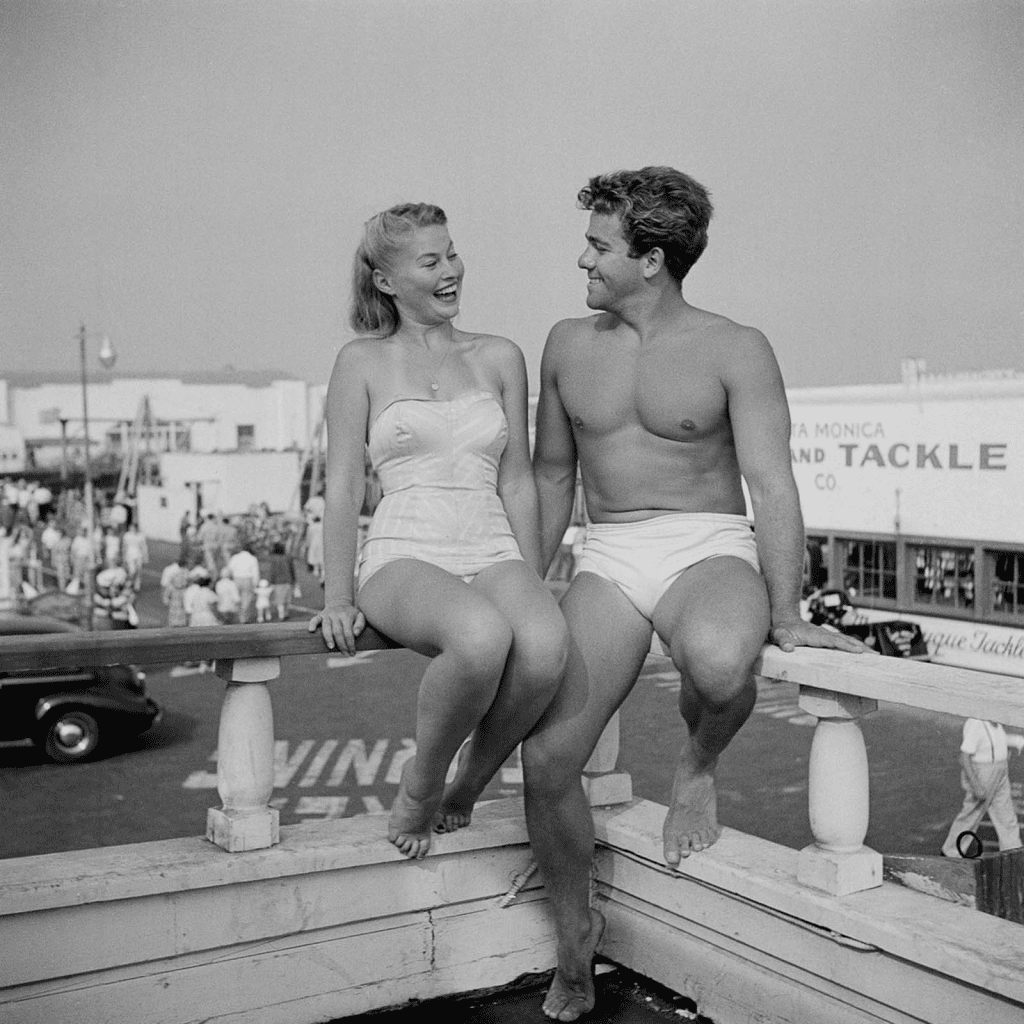
By the 1970s and ’80s, Venice Muscle Beach was the training ground for legends like Arnold Schwarzenegger, Lou Ferrigno, and the era’s top professional bodybuilders. It was featured in the cult documentary Pumping Iron and helped spark the global bodybuilding craze that continues to this day.
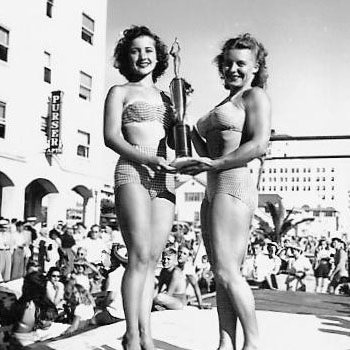
A Living Legacy
Today, Muscle Beach—both the original Santa Monica site and the bustling Venice version—remains a symbol of freedom, discipline, and creativity. Events like Mr. & Ms. Muscle Beach still draw crowds every year. Tourists from around the world stop to watch bodybuilders lift under the sun, or to try a few pull-ups on the very bars where history was made.
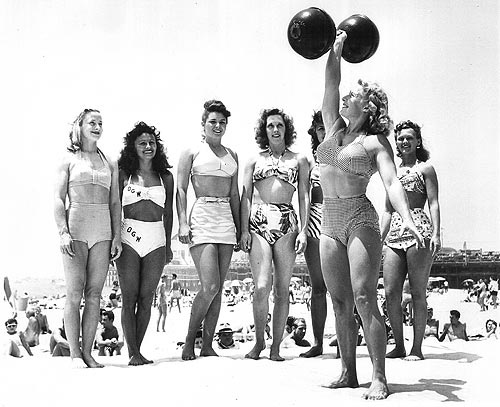
More than a gym, more than a beach, Muscle Beach is a state of mind—one that embraces confidence, community, and the idea that strength can be beautiful, joyful, and inclusive.
And that photo from the 1950s? It’s not just a snapshot. It’s a time capsule, capturing the exact moment when strength was art, and the beach was its canvas.
